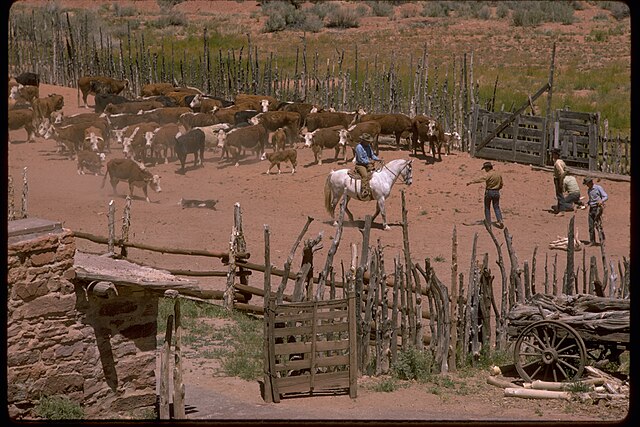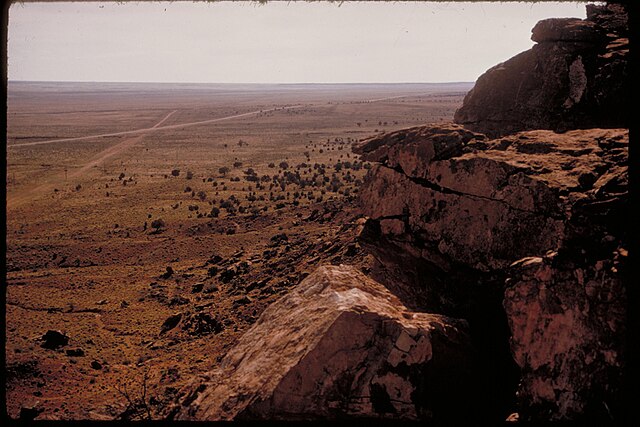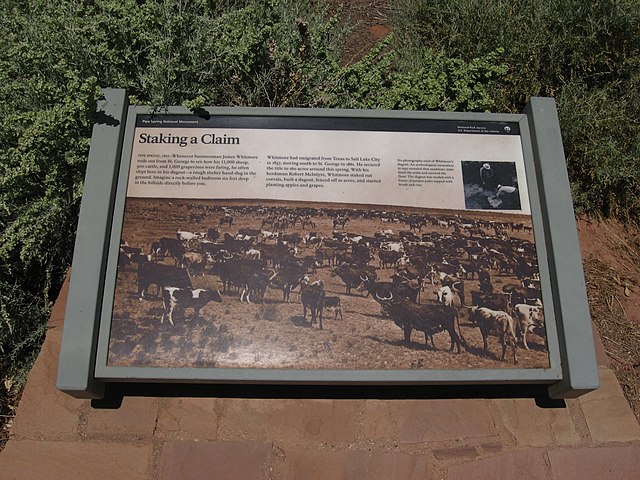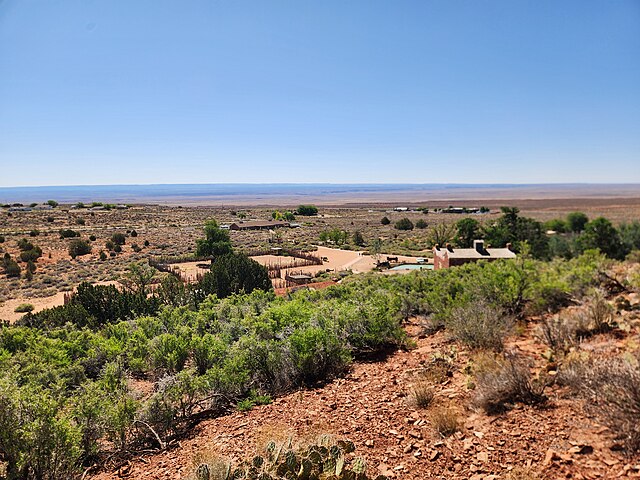Have you ever stumbled upon a place that feels like stepping through a portal into the past? That’s exactly what awaits you at Pipe Spring National Monument, a remarkable oasis tucked away in the Arizona desert. This isn’t your typical national monument – it’s a living testament to the intersection of cultures, the persistence of life in harsh environments, and the enduring power of water in the American Southwest.
Located in the Arizona Strip, this 40-acre monument might be small in size, but it’s enormous in significance. Picture this: a verdant spring bubbling up from the desert floor, surrounded by red rock formations that have witnessed thousands of years of human history. It’s like finding an emerald in a sea of sandstone.
What Makes Pipe Spring National Monument Special?
Pipe Spring National Monument stands out as a unique cultural crossroads where Native American heritage meets Mormon pioneer history. Unlike many national monuments that focus primarily on geological formations, this site tells a deeply human story – one of survival, adaptation, and the eternal quest for water in an unforgiving landscape.
The monument preserves not just a physical location, but a narrative that spans centuries. It’s where the Kaibab Paiute people lived sustainably for generations, where Mormon settlers established one of the most remote ranching operations in the West, and where today’s visitors can experience both cultures through immersive programs and authentic reconstructions.
Location and Getting There
Getting to Pipe Spring National Monument is part of the adventure. Situated about 15 miles southwest of Fredonia, Arizona, on Highway 389, the monument sits in what locals call the “Arizona Strip” – that isolated portion of Arizona north of the Grand Canyon. You’re literally in the middle of nowhere, which is exactly what makes it so special.
The drive itself is spectacular, with wide-open vistas and dramatic red rock formations that seem to stretch endlessly. Don’t expect cell phone service – this is one of those places where you can truly disconnect from the digital world and reconnect with something more fundamental.
Brief History Overview
The story of Pipe Spring reads like an epic novel spanning millennia. Long before European settlers arrived, the Kaibab Paiute people called this area home, living in harmony with the desert environment and relying on the precious spring water for survival. The spring wasn’t just a water source – it was the heartbeat of life in this arid region.
In the 1860s, Mormon pioneers discovered the spring and recognized its potential. They established a ranching operation here, building what would become known as Winsor Castle – a fortified ranch house that served as both home and fortress in this remote frontier location.
The Rich Cultural Heritage of Pipe Spring

What sets Pipe Spring apart from other historical sites is its authentic representation of two distinct cultures that called this place home at different times. It’s not just about preserving buildings or artifacts – it’s about keeping alive the stories, traditions, and wisdom of the people who thrived here against all odds.
Native American Significance
For the Kaibab Paiute people, Pipe Spring was far more than just a water source – it was a sacred place woven into the fabric of their existence. The spring provided life in the truest sense, supporting not just human habitation but an entire ecosystem that the tribe understood intimately.
The Paiute people developed sophisticated knowledge of the desert environment, understanding seasonal patterns, plant cycles, and animal behavior in ways that allowed them to thrive where others might merely survive. Their relationship with this landscape wasn’t one of conquest but of partnership – a lesson that resonates strongly in our current age of environmental awareness.
Kaibab Paiute Tribe Connection
Today, the Kaibab Paiute Tribe maintains a strong connection to Pipe Spring National Monument. They’re not just part of the historical narrative – they’re active participants in telling their own story. Through educational programs, cultural demonstrations, and ongoing partnerships with the National Park Service, tribal members share their ancestors’ wisdom and ensure their culture continues to flourish.
The tribe’s involvement transforms the monument from a static historical site into a living cultural center. When you visit, you’re not just observing history – you’re experiencing it through the eyes of people whose families have called this land home for countless generations.
Mormon Pioneer Settlement
The Mormon settlement at Pipe Spring represents one of the most ambitious frontier ventures in American history. In the 1860s, establishing a ranch in this remote location wasn’t just challenging – it was downright audacious. Yet the pioneers who came here weren’t deterred by the isolation or the harsh conditions.
The settlement served multiple purposes: it was a working ranch, a way station for travelers, and a strategic outpost in the Mormon expansion into the Southwest. The settlers brought with them not just livestock and farming techniques, but also a strong sense of community and religious purpose that helped them persevere through incredibly difficult circumstances.
The Winsor Castle Story
Winsor Castle stands as the crown jewel of Pipe Spring National Monument – a two-story sandstone fortress that looks like it belongs in a Western movie. Built in the 1870s by Anson Perry Winsor, this wasn’t just a ranch house; it was a statement of permanence in an impermanent world.
The “castle” earned its nickname from its fortified design, complete with thick walls, strategic windows, and defensive features that could protect inhabitants from both human threats and harsh weather. But despite its fortress-like appearance, it was ultimately a home – a place where families lived, worked, and built their dreams in one of the most remote corners of the American frontier.
Exploring the Natural Wonders
While the cultural history of Pipe Spring is fascinating, the natural environment is equally compelling. This is desert life at its most resilient and beautiful – a ecosystem that has adapted to extreme conditions while maintaining remarkable diversity.
Desert Ecosystem and Wildlife
The desert around Pipe Spring might look barren to the untrained eye, but it’s actually teeming with life. This is the high desert of the Colorado Plateau, where survival depends on adaptation and timing. The plants and animals here have evolved incredible strategies for dealing with temperature extremes, water scarcity, and intense sunlight.
The presence of the spring creates a unique microenvironment that supports species you wouldn’t expect to find in such an arid landscape. It’s like nature’s own oasis, proving that life finds a way even in the most challenging conditions.
Flora and Fauna
The plant life around Pipe Spring tells a story of adaptation and resilience. You’ll find everything from hardy desert shrubs like sagebrush and greasewood to unexpected pockets of greenery around the spring itself. The contrast is striking – step a few feet away from the water source, and you’re in classic high desert; step toward the spring, and you’re in a surprisingly lush microhabitat.
Wildlife viewing can be exceptional, especially during the cooler parts of the day. Desert bighorn sheep occasionally visit the area, while smaller mammals like jackrabbits, ground squirrels, and various bat species call this place home. Bird watchers will be delighted by the variety of species, from common ravens to the occasional golden eagle soaring overhead.
The Spring That Started It All
The spring itself is the heart of everything at Pipe Spring National Monument. It’s not a dramatic geyser or a rushing waterfall – it’s something more subtle and, in many ways, more profound. This is water emerging from deep underground, finding its way to the surface through cracks in the sandstone, creating life where logic says there should be none.
Standing beside the spring, you can understand why both Native Americans and Mormon settlers considered this place sacred. In a landscape where water is precious beyond measure, a reliable spring isn’t just a natural feature – it’s a miracle.
Visitor Experience and Activities
Visiting Pipe Spring National Monument is like stepping into a living history book. The National Park Service has done an exceptional job of creating an immersive experience that goes beyond just looking at old buildings. You’re not just a tourist here – you’re a participant in an ongoing story.
Guided Tours and Self-Guided Walks
The guided tours at Pipe Spring are absolutely worth your time. Park rangers and tribal members serve as guides, bringing the history to life with stories, insights, and details you’d never discover on your own. These aren’t dry historical lectures – they’re engaging narratives that help you understand what life was really like for the people who lived here.
If you prefer to explore at your own pace, the self-guided walks are excellent alternatives. Well-marked trails lead you through the key sites while interpretive signs provide context and background. The beauty of the self-guided option is that you can linger wherever something captures your interest.
Educational Programs
The educational programs at Pipe Spring are particularly impressive because they’re developed in partnership with the Kaibab Paiute Tribe. This means you’re getting authentic cultural education, not just second-hand interpretations of Native American life.
Programs range from traditional craft demonstrations to storytelling sessions that share oral histories passed down through generations. These experiences offer something you can’t get from books or documentaries – direct connection with living culture.
Living History Demonstrations
The living history demonstrations are where Pipe Spring really comes alive. Picture this: you’re watching a blacksmith work at an authentic 1870s forge, or observing traditional Paiute basket weaving techniques that have been passed down through families for generations. These aren’t reenactments – they’re genuine skills being practiced by people who learned them from their elders.
These demonstrations happen throughout the year, with scheduling that varies by season. It’s worth checking the monument’s calendar before your visit to see what special programs might be available during your stay.
Planning Your Visit

Planning a visit to Pipe Spring National Monument requires a bit more forethought than visiting urban attractions. This is remote territory, and being prepared will make your experience much more enjoyable.
Best Times to Visit
The high desert climate means that timing your visit can make a huge difference in your experience. Spring (April-May) and fall (September-October) offer the most comfortable weather, with moderate temperatures and occasional wildflower blooms that transform the landscape.
Summer can be brutally hot, with temperatures often exceeding 100°F. If you visit during summer months, plan for early morning or late afternoon activities and bring more water than you think you’ll need. Winter visits can be magical, especially if you catch the area after a light snowfall, but be prepared for unpredictable weather and potential road closures.
Entrance Fees and Passes
Pipe Spring National Monument charges a modest entrance fee that helps support the preservation and interpretation programs. Annual passes are available and can be a good value if you plan to visit multiple times or explore other nearby national park sites.
The America the Beautiful National Parks Pass is accepted here and can be an excellent investment if you’re planning to visit multiple national parks or monuments during your travels.
What to Bring
This is desert country, so preparation is key. Water is absolutely essential – bring more than you think you’ll need. The sun can be intense at this elevation, so sunscreen, a hat, and sunglasses are must-haves. Comfortable walking shoes are important, as some areas involve walking on uneven terrain.
A camera is obviously recommended, but don’t forget to bring extra batteries or a power bank – there are limited opportunities to recharge devices in this remote location.
Nearby Attractions and Day Trip Ideas
One of the great things about Pipe Spring’s location is that it serves as an excellent base for exploring the broader region. You’re within driving distance of some of the most spectacular scenery in the American Southwest.
Zion National Park Connection
Zion National Park is just about an hour’s drive from Pipe Spring, making it possible to combine both destinations in a single trip. The contrast between the intimate, human-scale story of Pipe Spring and the overwhelming grandeur of Zion creates a fascinating travel experience.
Many visitors use Pipe Spring as a quiet alternative to the busy campgrounds in Zion, especially during peak season. You can enjoy the solitude and cultural richness of the monument while still having access to Zion’s world-famous hiking trails.
Other Regional Highlights
The Arizona Strip contains several other interesting destinations worth exploring. The Vermilion Cliffs National Monument offers spectacular scenery and the chance to see California condors in their natural habitat. Antelope Canyon and other slot canyons in the area provide photographic opportunities that are hard to match anywhere else in the world.
For those interested in more Mormon pioneer history, the nearby town of Fredonia offers additional historical sites and serves as a good base for exploring the region.
Photography and Wildlife Watching Tips

Pipe Spring offers unique photographic opportunities that blend cultural history with natural beauty. The key to great photography here is understanding how the desert light changes throughout the day.
The golden hour – that magical time just after sunrise and before sunset – transforms the red rock formations into glowing masterpieces. The sandstone walls of Winsor Castle take on warm, rich tones that are impossible to capture during the harsh midday sun.
For wildlife photography, patience is essential. Desert animals are often most active during the cooler parts of the day, so early morning and late afternoon tend to be the most productive times. Water sources like the spring itself can be excellent places to wait for wildlife to appear.
Conservation Efforts and Challenges
Preserving Pipe Spring National Monument involves unique challenges that go beyond typical conservation efforts. This is a place where cultural preservation is just as important as environmental protection, requiring careful balance between public access and resource protection.
Climate change poses particular challenges for desert ecosystems. Changes in precipitation patterns and temperature extremes can affect both the spring’s flow and the broader ecosystem that depends on it. The National Park Service works closely with scientists to monitor these changes and develop adaptive management strategies.
Cultural preservation requires ongoing partnership with the Kaibab Paiute Tribe to ensure that their stories and traditions are accurately represented and respectfully shared. This collaboration represents a model for how national monuments can honor indigenous heritage while providing educational opportunities for visitors.
Conclusion
Pipe Spring National Monument proves that size doesn’t determine significance. This small oasis in the Arizona desert packs more cultural richness, historical importance, and natural beauty into its 40 acres than many much larger destinations. It’s a place where the past feels present, where different cultures’ stories interweave to create something greater than the sum of their parts.
Whether you’re drawn by the pioneering spirit of the Mormon settlers, the deep cultural wisdom of the Kaibab Paiute people, or simply the remarkable sight of a spring bubbling up from the desert floor, Pipe Spring offers experiences that stay with you long after you’ve returned home. In our fast-paced, connected world, places like this remind us of the enduring power of simple things: water, shelter, community, and the human ability to adapt and thrive in challenging environments.
Your visit to Pipe Spring National Monument isn’t just a trip to a historical site – it’s an opportunity to connect with the deeper currents of American history and the timeless relationship between people and place. In a world that often feels divided, Pipe Spring stands as a testament to the possibility of different cultures sharing the same sacred space, each contributing their own chapter to an ongoing story of survival, adaptation, and hope.
Frequently Asked Questions
1. How long should I plan to spend at Pipe Spring National Monument?
Most visitors spend 2-4 hours at the monument, which is enough time for a guided tour, exploration of the grounds, and perhaps a self-guided walk. However, if you’re particularly interested in the cultural programs or want to photograph the site during different lighting conditions, you might want to plan for a full day.
2. Is Pipe Spring National Monument suitable for families with children?
Absolutely! The monument offers excellent educational opportunities for children, with engaging programs that bring history to life. The walking distances are manageable for most ages, and the living history demonstrations are particularly popular with kids. Just be sure to bring plenty of water and sun protection.
3. Can I camp at Pipe Spring National Monument?
There’s no camping available at the monument itself, but the nearby Kaibab Paiute Tribe operates a campground with basic facilities. Additionally, there are camping options in the surrounding area, including at nearby state parks and on Bureau of Land Management lands.
4. What’s the best way to combine Pipe Spring with other attractions in the area?
Many visitors combine Pipe Spring with Zion National Park, which is about an hour’s drive away. You can also create a loop that includes the North Rim of the Grand Canyon (seasonal), Antelope Canyon, and other attractions in the Four Corners region. The monument works well as either a day trip or as part of a longer Southwest adventure.
5. Are there any special events or festivals at Pipe Spring National Monument?
The monument hosts several special events throughout the year, including cultural celebrations, historical reenactments, and educational workshops. The Kaibab Paiute Tribe sometimes holds traditional gatherings that are open to the public. Check the monument’s official website or contact the visitor center for current schedules, as events can vary from year to year.

